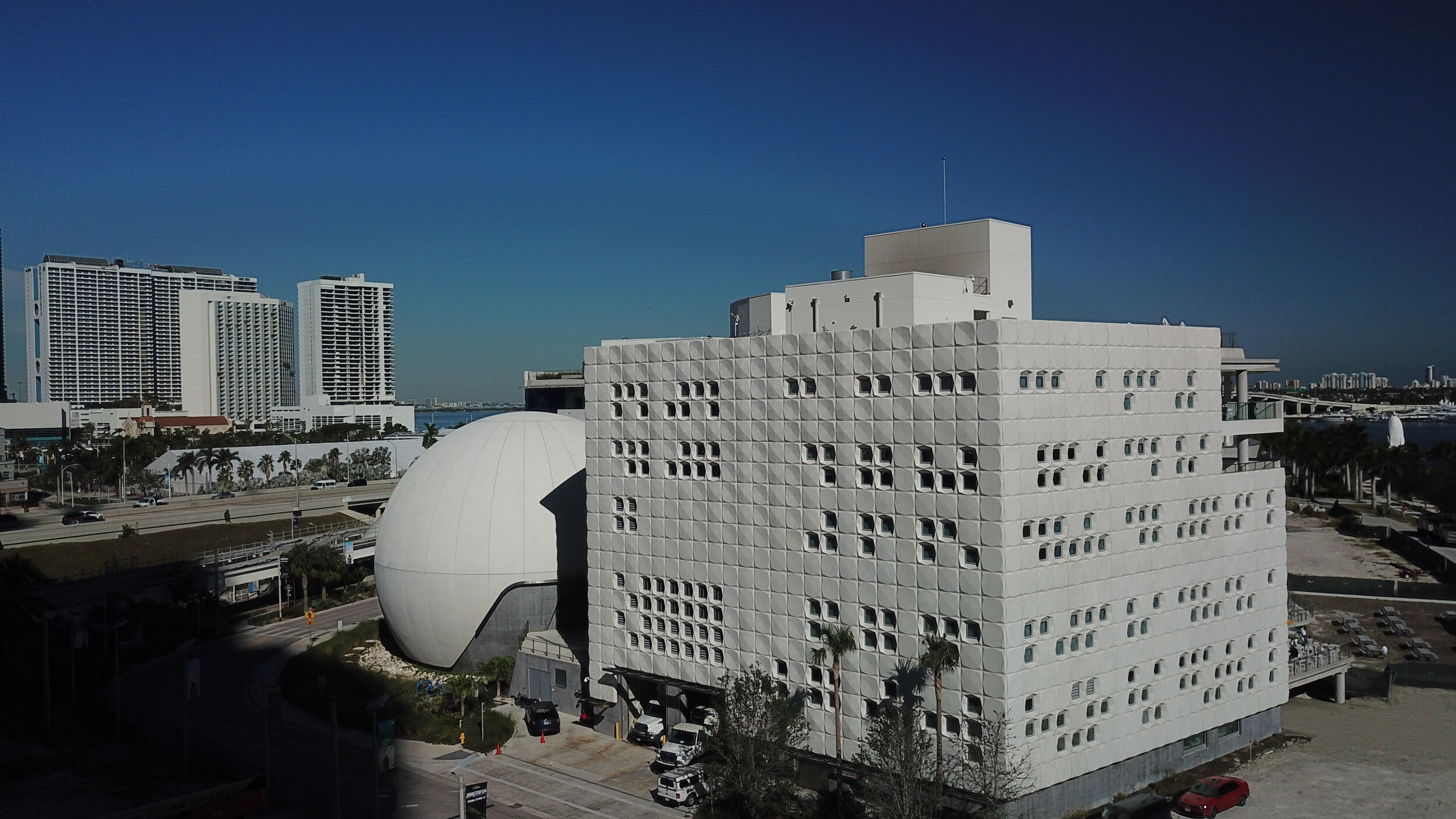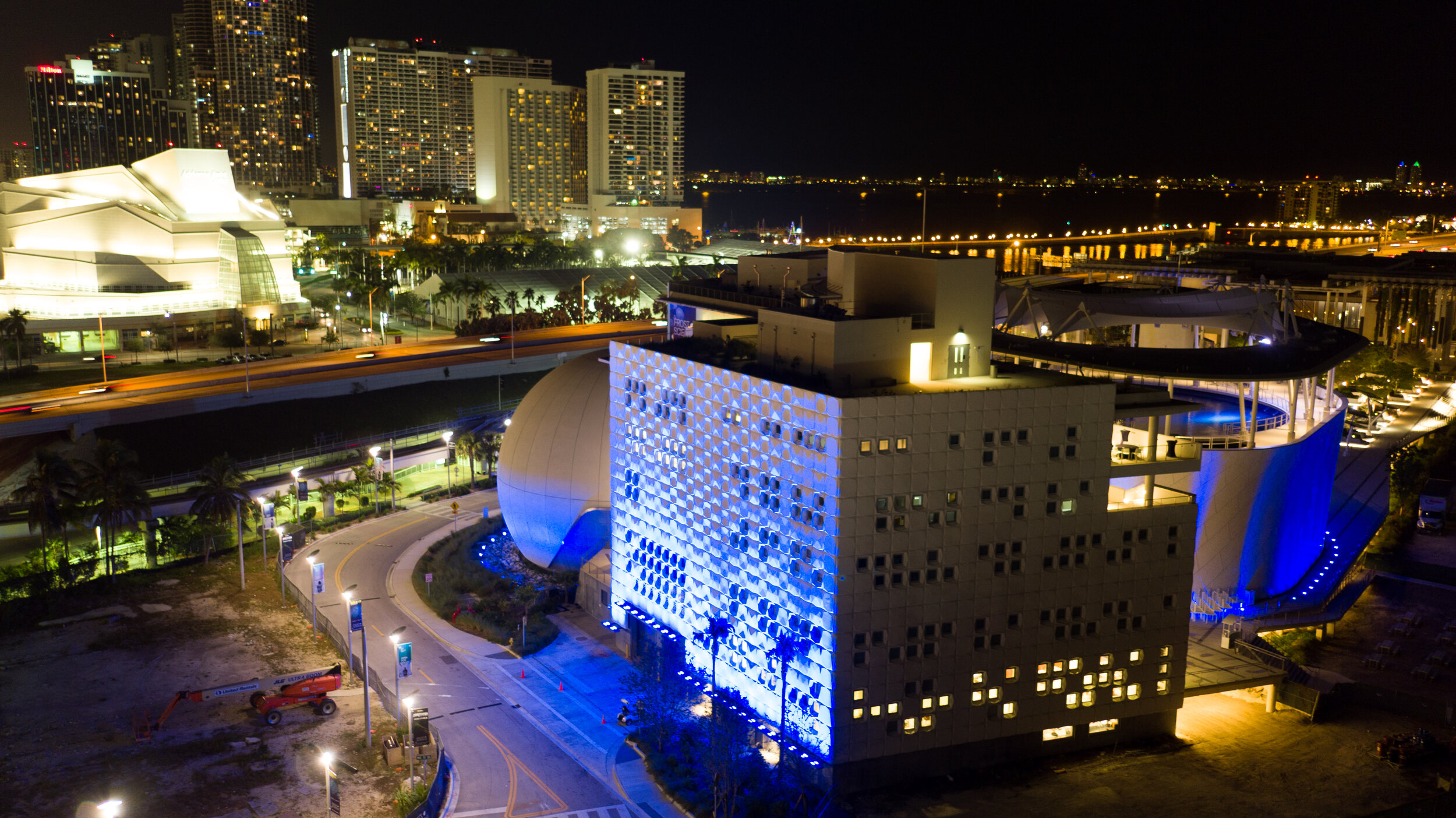Location:
The Phillip and Patricia Frost Museum of Science
Miami, FL
Schedule:
Project Completion: 2015
Cost:
Square Footage: 250,000 SF
Involved Companies
Precast Concrete Producer
Gate Precast Company
810 Sawdust Trail
Kissimmee, FL 34744
https://gateprecast.com/
Precast Specialty Engineer
eConstruct
11823 Arbor Street
Omaha, NE 68144
http://econstruct.us/
Architect
Rodriguez and Quiroga Architects Chartered
2100 Ponce de Leon Blvd
Coral Gables, FL 33134
http://www.rodriguezquiroga.com/
Executive Architect
Grimshaw Architects
2 Gansevoort Street
New York, NY 10014
https://grimshaw.global/
PCI Certified Erector
Specialty Concrete Services
37920 Highway 19
Umatilla, FL 32784
General Contractor
Skanska
330 SW 2nd Street
Fort Lauderdale, FL 33312
https://www.skanska.com/
Engineer (Structural)
Donnell Duquesne & Albaisa
4930 SW 74th Court
Miami, FL 33155
https://www.ddaeng.com/
Engineer (MEP)
Fraga Engineers
135 San Lorenzo Ave
Coral Gables, FL 33146
https://www.fragaeng.com/
Background
Designers of the Phillip and Patricia Frost Museum of Science in Miami, Fla., wanted to create a structure that would surprise and delight patrons before they even walk through the door. Their solution was to create a three-dimensional façade and construct a massive, dome-shaped planetarium with cutting-edge acoustics and a surface so smooth it can be used as a movie screen.
The resulting six-story museum features open-air parking covered by five stories of museum comprising approximately 250,000 ft² of interior and exterior space. The most prominent element of the design is the freestanding 67-ft-diameter dome, which houses the planetarium theater. While designers hadn’t initially considered precast concrete for any part of the project, their early research determined it was the most flexible and durable solution, particularly for the dome.
“After looking at a steel structure to support cladding panels of different materials, and considering a shotcrete dome, self-supporting spherical precast concrete structural panels proved to be the most cost-effective solution,” says James Palma, senior project manager at Rodriguez and Quiroga Architects. “It provided the density required for acoustics, the durable structure, and a light sandblast finish that was the perfect projection surface.”
Once other cladding options were abandoned, the designers worked closely with Gate Precast Company to develop the concept using precast concrete as cladding and as the dome’s structure. The use of three-dimensional modeling was vital to ensuring every piece fit perfectly, and addressing any errors in design before construction began, Palma says.
The dome cap, dubbed the Arctic Circle, was formed from two cap pieces combined to make a 30-ft-diameter keystone. The fabrication and quality assurance teams used a laser total station for layout and verification to achieve the perfectly round design. The cap was then made by placing concrete successively around the outer perimeter of the mold once the backform was in place. Each cap piece required 17 yards of architectural concrete.
The dome panels were cast exterior-face-down, with a top interior face form to address the significant curvature. Each panel has a continuous ledge at the bottom to allow it to be set on the cast-in-place foundation wall, which was also curved to match the dome curvature. To eliminate cracking during any of the stages of production and construction, monostrand post-tensioning anchored at the top and bottom of the panel was used.
To avoid damage in shipping and erection, jobsite conditions were mimicked at the plant, including lifting pieces off the truck, and tilting and hanging them from a crane. Due to the requirement that no embeds were allowed for handling on the exterior face, steel-rope cables were attached to the underside of the pieces and wrapped on the sides. This innovative solution allowed the lifting device to fit in the gap between peel panels and then to be removed after all of the panels were installed.
Once on the jobsite, the precast concrete cap was installed first, supported by a temporary custom shoring tower, then the spherical sections were installed and welded together “once the scaffolding was removed, making the dome completely self-supporting,” Palma says.
Along with the dome, patrons also love the unique geometric three-dimensional relief pattern on the façade of the north and west buildings. Gate created the design by combining 16 different geodesic shapes in various configurations on 95 panels. “The random patterning meant that almost no two panels are the same”, Palma says.
The Phillip and Patricia Frost Museum of Science is now among the world's most innovative and sustainable science museums. “Miami has a rich history of using precast concrete in its civic architecture,” Palma says. “This design adds the most unique use of precast to this rich collection.”
Photos via Miami In Focus and Gate Precast Company













